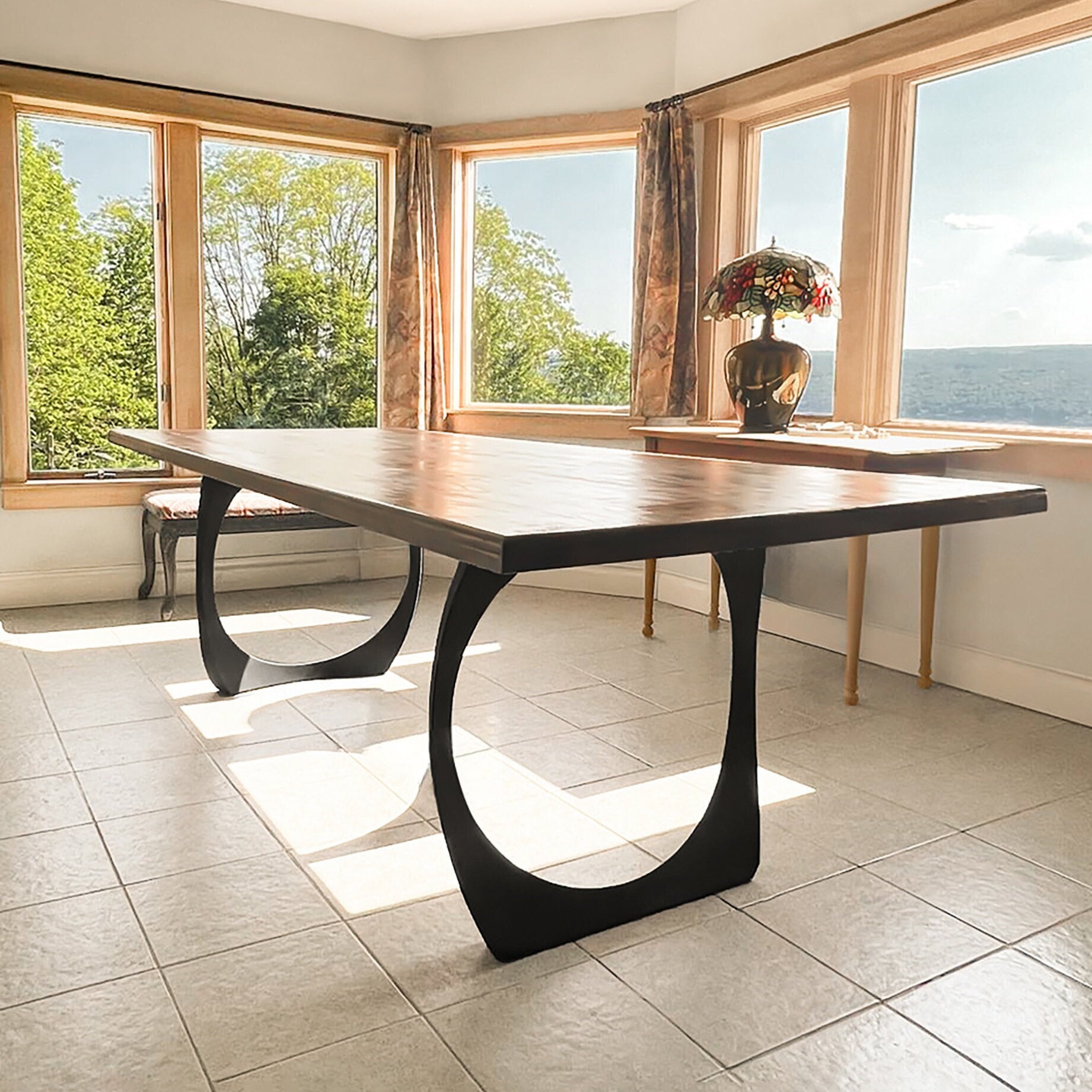Just how to Select the Perfect Dining Room Table Legs for Your Home Decoration
Just how to Select the Perfect Dining Room Table Legs for Your Home Decoration
Blog Article
An In-depth Look at Dining Table Leg Styles: Locating the Suitable Match
Selecting the ideal dining table leg design is crucial for both visual allure and useful capability. For those with larger tables, trestle legs make sure sturdy support, whereas barrette legs introduce a mid-century contemporary ambiance with their minimalist layout. The x-shaped legs mix contemporary design with boosted security.
Conventional Four Legs
Amongst the numerous types of table leg designs, the typical four-leg design remains an ageless option for several households. This classic configuration provides a harmonious mix of performance and visual appeals, making it a perennial favorite. Four legs offer balanced support, guaranteeing the table stays steady and with the ability of birthing considerable weight. This is specifically advantageous for households that frequently host large celebrations or use their eating table for numerous objectives, such as job or crafting.
From an aesthetic perspective, the traditional four-leg layout can be conveniently adapted to various indoor designs. Whether crafted from wood, steel, or a mix of materials, these legs can be intricately sculpted, smooth and minimalistic, or anything in between. Their flexibility allows them to enhance both rustic and contemporary settings flawlessly.
In addition, the simple structure of the four-leg layout helps with ease of activity and placement within a room. Unlike even more complex bases, this design reduces blockages, supplying ample legroom for restaurants. In summary, the traditional four-leg eating table leg style weds enduring style with useful performance, making it an astute selection for those seeking both type and function in their dining furnishings.
Stand Base
Commonly commemorated for its stylish and space-efficient design, the stand base is a distinguished choice to the conventional four-leg arrangement in table leg designs. This distinctive base normally features a single main column supporting the tabletop, which can differ in form, from ornately carved timber to sleek, contemporary steel. One of the main benefits of the stand base is its ability to optimize legroom and seating flexibility. Without corner legs, restaurants are managed greater flexibility of activity, making it a perfect option for round and oblong tables that advertise more intimate and inclusive events.
In addition, the stand base's main assistance can take care of substantial weight, permitting making use of heavier tabletops, such as marble or thick hardwood. This strength coupled with its aesthetic versatility makes the pedestal base a popular choice in both traditional and contemporary indoor setups. It can flawlessly incorporate with numerous layout styles, from traditional sophistication to minimalist modernity. Additionally, the central column itself offers a canvas for intricate designs and imaginative expressions, including a component of visual rate of interest below the table. In summary, the stand base integrates capability snappy, making it a refined and functional choice for diverse eating atmospheres.
Trestle Legs
Trestle legs offer a durable and ageless foundation for eating tables, characterized by their straight cross-bracing and durable assistance beams. Stemming from medieval times, this layout has advanced yet maintained its vital structure, making it a perennial fave in both conventional and modern settings. The main trestle beam, commonly supported by 2 or even more vertical blog posts, offers phenomenal stability, enabling larger table sizes without the need for extra legs.
A substantial advantage of trestle leg tables is the adequate legroom they offer. Unlike tables you can look here with four edge legs, the lack of obstructions at the table's edges supplies unblocked area for chairs and restaurants, boosting comfort and availability. This makes trestle tables ideal for fitting bigger celebrations, whether in a dining space or a reception hall.
From rustic farmhouse to sleek modern styles, trestle legs can be customized to fit private preferences. Their long-lasting appeal and functional benefits make trestle legs an engaging option for those seeking both design and practicality in their eating table.
Barrette Legs

The appeal of hairpin legs depends on their simpleness and convenience - dining room table legs. Readily available in a variety of materials, including steel and brass, they can be finished in various colors to match different interior styles. Whether coupled with a rustic wood table top or a contemporary glass surface, hairpin legs effortlessly mix capability with a touch of classic appeal
Sturdiness is an additional notable function of barrette legs. In spite of their delicate look, these legs are engineered to birth click to read considerable weight, ensuring the eating table continues to be secure and secure. Additionally, they are relatively very easy to set up, making them a preferred option for do it yourself lovers and expert furniture manufacturers alike.
X-Shaped Legs

Created from materials such as steel, timber, or a mix of both, X-shaped legs can be customized to match different style preferences. Steel legs usually offer a sleek and industrial feeling, suitable for loft-style apartments and contemporary dining spaces.
In addition, the design behind X-shaped legs makes sure also weight circulation, decreasing the risk of wobbling and enhancing durability. This makes them specifically appropriate for larger eating tables that call for additional assistance. Fundamentally, X-shaped legs mix useful engineering with modern-day aesthetics, making them an ageless selection for diverse dining environments.
Conclusion
A detailed understanding of dining table leg designs reveals the distinctive characteristics and benefits of each layout. Trestle legs ensure durable support for larger tables, and barrette legs introduce a mid-century useful content modern aesthetic.
Report this page